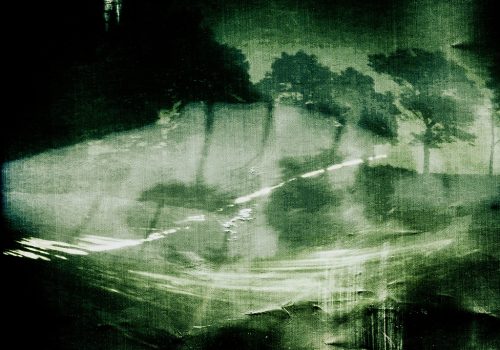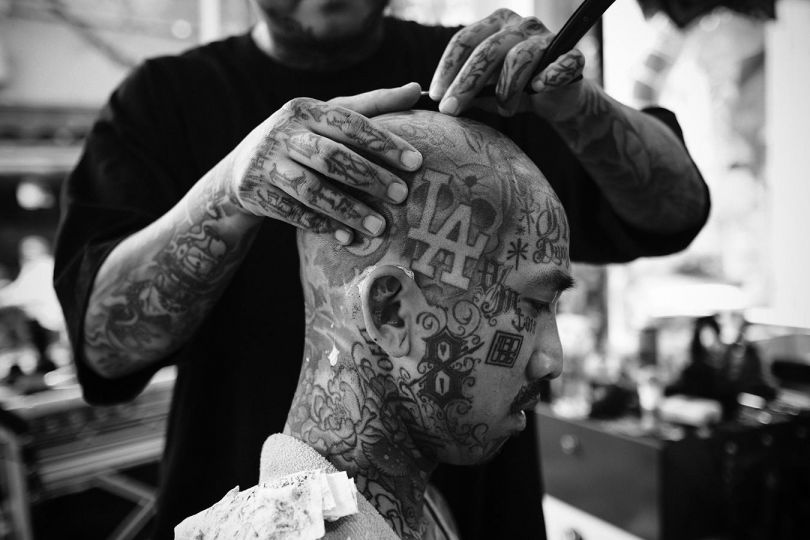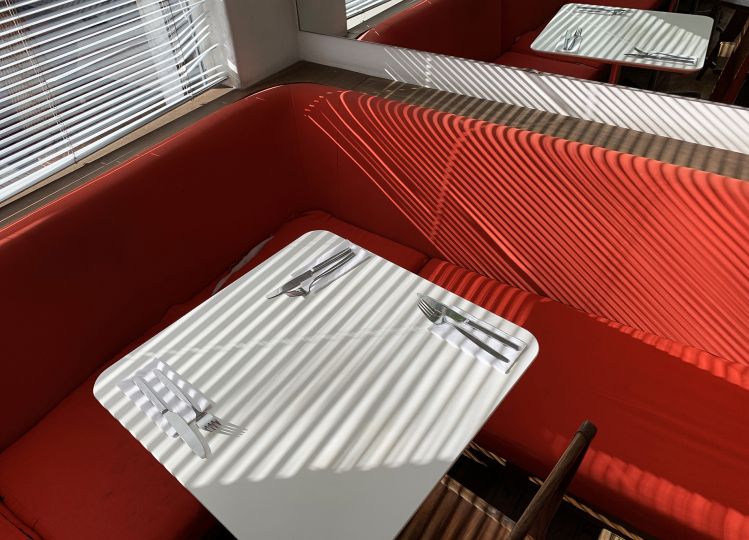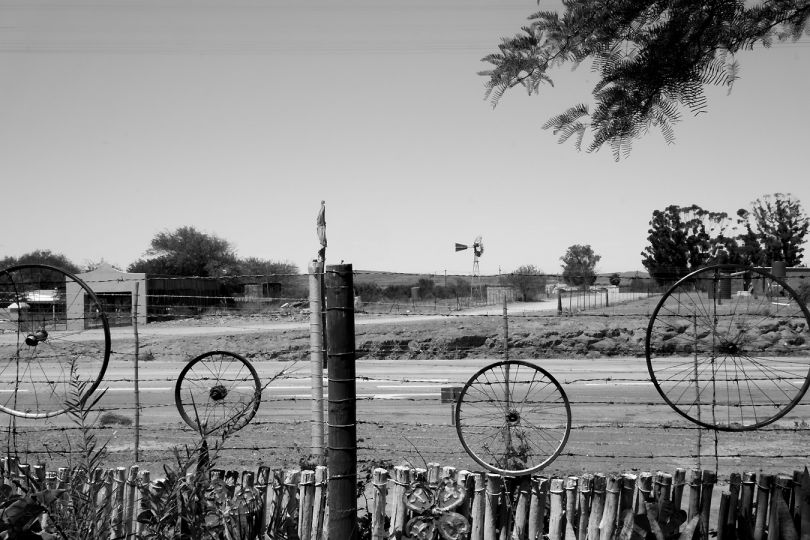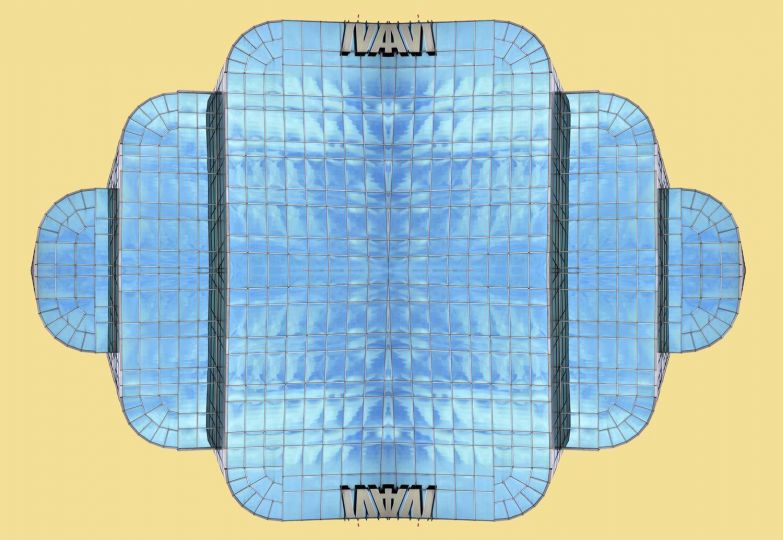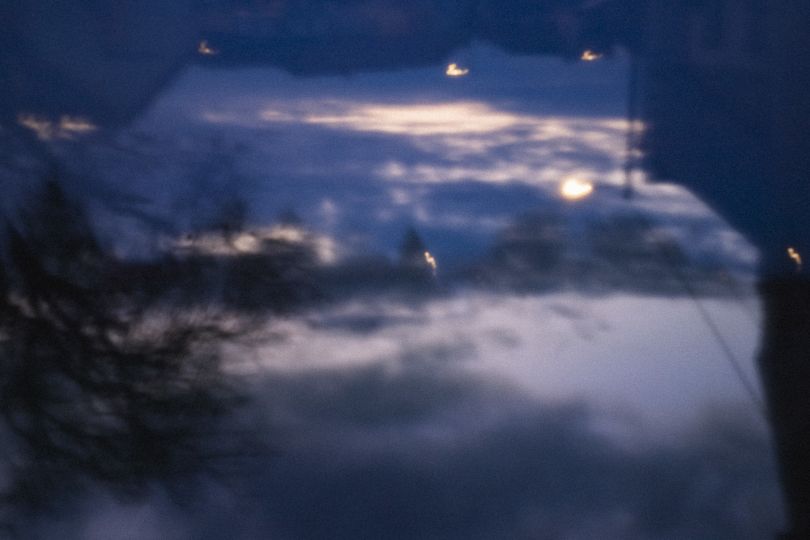The Solar Script Phenomenon – The world of easily reproducible images has become the companion of our everyday life. We devote every free moment of our lives to production and review of video recordings and photographs without a conscious thought about it. I often think whether we ever consider that with this process of infinite image consumption we are simply killing the artistic power of an image. That is perhaps why some of artists I know decide to revise the history of image creation and invent a new language of photography, firmly ignoring the perfect contemporary photo-optics, electronics and IT software for image processing. This particular type of creation is practiced by photoartist Žilvinas Kropas from Panevėžys.
Žilvinas Kropas (b. 1983) has been actively working in alternative photography (pinhole, solargraphy, lumen print) since 2012. Since 2015 he is a member of Panevėžys Photography Society Board, since 2017 – member of Gabriele’s Art Gallery (Kaunas). In 2016 – 2018 he participated in nine group exhibitions, organised in Lithuania, Colombia, Belorus, Argentina, Great Britain. His photographs have been published in international art journals and specialized press in the USA and Mexico[1].
Žilvinas Kropas’s work takes us to the end of the 19th – beginning of the 20th century when in the search for a photographic media and an authentic language for photo-art, the separation of photography from fine arts was being manifested. The search for an authentic language was performed in two ways: the first, an optical/ mechanical experimentation, attempting to produce a perfect image projection on the surface; the second, chemical, that would allow to preserve the image ‘caught’[2]. Žilvinas Kropas, on his part, seems to be able to practice both of those methods. He bravely delves into the essence of photography encoded in its very title, which suggests mere chance, free from any preconceived human wishes. Here the artist has no other solution than to invent anew the instrument of taking photographs and collect bravely the traces of light. Let’s have a look at his experiences of the photographying process and its instruments:
[…] My camera is an empty beer can with a piece of light-sensitive photopaper inside. Instead of the lens there is a small hole in the metal surface of the can, made with a needle, which lets in the light and draws the image on the photopaper. There’s nothing more – no electronics, no battery, no optics. […] Using the tin can I photograph the trace of the sun, that is different in every different season of the year. The exposition of a photograph sometimes lasts several months, sometimes a whole year. […] I chose his method of taking photographs because I really don’t like all those beautiful and presicely edited pictures. I also don’t like that everyone may create a picture similar to another, already existing image. I want a diffeent, unique, real and long-term reflection of the world[3].
Why does the artist dislike the possibility for everybody to re-create an image similar to an already-existing one? I think the answer may be found in Susan Sontag’s (1933 – 2004) book On Photography (1973), where the author claims that photography, being a message, seems to us transparent and mysterious at the same time. In this way the very perception of photography is only an illusion, where photographic vision nurtures aesthetic self-perception and enhances emotional isolation[4].
Thus it is possible to claim that Žilvinas, trying to capture the authentic change of light that continues for a certain uninterrupted period of time, signifies in this manner his isolation from the world of abundantly reproduced images. He shows us a rather objective document of time flow that captures our attention. The very title of the photographic cycle – Illumination of solar scripts – signifies the gesture of photography as dedication as well. On the one hand, it is possible to claim that in this way Žilvinas dedicates his work to the sun, one of the fundamental sources of life; on the other hand, the viewer may imagine his own associative addressees/ objects/ subjects of this dedication (for example, the sungod, astronomy, Lithuanian solar clocks, sun calendars or something similar). All those dedications are associative, they reinforce the mystery of the artworks, along with the uncertainty which invites us to dream[5].
Representing the trend of experimental photography, known as solargraphy, the artist questions the phenomenon of writing, providing the viewer with intentional directions that make us reflect on the very origin of the title of photography: the Greek phos (φως) means light, while graphis (γραφις) is the paintbrush. Which means that with minimal means Žilvinas Kropas is able to capture what is written or painted by nature. This is what he thinks about it:
I am a cronicler of time, all the time that has passed is layered in one photography, there is little I as an artist can do here… The final photograph is full of surprises and uncertainties, many strange things. Photography may be unpredictable and mysterious, somehow out of this Earth, like some other abstract world. It makes one wish to observe it for a very long time, and immerse into it with one’s thoughts. […] My artworks are practically created by the sun, the air, water, i.e. all the natural environment that does not depend on me. All artworks are unique, they are impossible to reproduce[6].
When I regard the photographs of Žilvinas Kropas, I never stop asking myself about what photography is. I come to the conclusion that, on the one hand, we are used to attributing to photography the function of documenting the recognizable world or beautifying the reality; on the other hand, in this way we are forgetting that photographs may be capricious, characteristic, noncompromising – like bright personalities. In this contemporary world of universal depreciation of the image artists like Žilvinas Kropas return the character of photography to the Olympus of arts.
Žilvinas Kropas’s attitude to photography is partly and intuitively relatable to the origin of a term that defines the negative-positive process, invented by William Henry Fox Talbot (1800 – 1877). Calotype is the title of a phototechnique that evolutionizes much like poetry: first, at the begining of the technology it was named photogenical drawing and héliographie, which means solar script, second, the Greek kalos (καλός) means beautiful, and tupos (τύπος) is impression. Without doubt, the artworks of Žilvinas Kropas give an impression of beauty.
Another intuitive parallel is with the book The Pencil of Nature (1844 – 1846), illustrated with W. H. F. Talbot’s photographs[7]. Doubtlessly, the parallels between Kropas and Talbot are really intuitive and quite distant, yet they are united by an extremely intimate and sensitive attitude towards the phenomenon of photography. Talbot, as well as Kropas, is troubled by issues of the essence of photography, that arise as soon as one attempts to grapple with the disobedient instrument of work (photocamera, photopaper and photochemistry) [8].
Another not less interesting parallel may be drawn between artworks of Žilvinas Kropas and the history of photogram. Photogram is a creative method when objects are put on light-sensitive material (usually photopaper), and their shapes and distances between them are marked by light itself. Thus artists of photograms, similarly to Žilvinas, compete with the natural light, trying to capture it and demonstrate to us as the most authentic art oeuvre. Here Susan Sontag reminds us that such photoexperiments like photograms (or Žilvinas Kropas’s Illuminations of solar scripts – R.V. note) are often considered marginal victories of the history of photography. Artists of this field have been always aiming at a conscious resistance to the superficial photorealism[9]. Ian Jeffrey is quite precise writing about the phenomenon of photograms and the problems that they actualize:
Laszlo Moholy-Nagy (1895−1946), Edmund Kesting (1892 – 1970), Theo Ballmer (1902 – 1965), Man Ray (1890 – 1976) in France produced photograms, using only objects (things) and light-sensitive paper, without a photocamera. […] results were hard to predict and often astonishing. To create a photogram is the same as throwing the dice – it is all the matter of luck. […] photogrammers look into experimental workshops and editing suites, they are also interested in objects that are easy to manipulate, that are here at hand. Like the masters of artistic photography of the last centuries, they idealize, they generalize. […] they turn a banality into a “shining unusual world”. […] they, as if obsessed with the attraction between the opposites, tend towards subjectivism, spirituality and nature, forces that are not easily measured or mastered[10].
It is possible to claim that the link between Žilvinas Kropas and photogrammers is the need to unveil a secret that lurks behind the recognizable things, shapes of natural objects, yet unfortunately, the unveiling of the secret creates just another secret that draws up the change of space and the flow of time onto a single surface. Photography turns all the captured components into paradoxical hostages of the two-dimensional surface. That is why, probably, the works of Žilvinas Kropas demand the attention of your glance again and again, provoking reflection upon them as particularly marked forms of reality deconstruction.
Though one may still hear opinions that photography should be perceived as technical reproduction of things and order of reality, yet Žilvinas Kropas comes emphatically close to the ideas of Walter Benjamin (1892 – 1940) on the origin of photography[11]. Žilvinas creates original images that are unavailable to the human eye in everyday environment. He registers images that cannot be captured not only with natural eyesight, but also by the perfected optical and electrotechnical machines. Žilvinas Kropas’s photographs, devoid of any human being, impart value on exposition itself – long and patient wait while the light travels, writing down the trajectory of its movement. Paradoxically, but today, while we are able to use high-quality optics and print out photographs from top-quality printing machines, we admire the experimental work like that of Žilvinas Kropas. The explanation is given by Walter Benjamin:
When the age of mechanical reproduction separated art from its basis in cult, the semblance of its autonomy disappeared forever. The resulting change in the function of art transcended the perspective of the century […] Earlier much futile thought had been devoted to the question of whether photography is an art. The primary question—whether the very invention of photography had not transformed the entire nature of art—was not raised[12].
Žilvinas Kropas, pursuing strictly pure alternative photography and his own artistic program, is the person who seeks to reanimate the cult background for art, eliminated in the age of reproduction. He endows photography with what traditionally belongs to fine arts[13]: the original, authenticity, and cultivation of good taste!
Prof. dr. REMIGIJUS VENCKUS
[2] Jaškūnienė, E. (2018). Fotografijos raiška: istorija, priemonės, stilius (Photographic expression: history, means, style). Audiovizualinių medijų taikymas kuriant ir diegiant inovacijas: neformalios vaikų švietimo programos kurso medžiaga (Audiovisual Media Application For Innovation: Materials For Informal Childen Education Program Course). Vilnius: Vilnius Gediminas Technical University (co-authors Venckus, R., Ruokis, R. Barevičiūtė, J.).
[3] Kropas, Ž. (2018-08–15). E-mail to R. Venckus about creation of photography. Kuizinaitė, G. (2018). Žilvinas Kropas: apie fotografijos ribas ir sklaidą (Žilvinas Kropas: on limits and dissemination of photography). Kultūros tiltas.http://www.gabrielegallery.eu/kulturos-tiltai/ (Accessed 2018-09-28).
[4] Sontag, S. (2000). Аpie fotografiją (On Photography). Vilnius: Baltos lankos, 115 (transl. Laurynas Katkus).
[6] Kropas, Ž. (2018-08–15). E-mail to R. Venckus about creation of photography. Kuizinaitė, G. (2018). Žilvinas Kropas: apie fotografijos ribas ir sklaidą (Žilvinas Kropas: on limits and dissemination of photography). Kultūros tiltas.http://www.gabrielegallery.eu/kulturos-tiltai/ (Accessed 2018-09-28).
[8] See Jeffrey, I. (1999). Fotografija: trumpa istorija. Vilnius: R. Paknio Publishing House, 16 (transl. Milda Dykė).
[9] Sontag, S. (2000). Аpie fotografiją (On Photography). Vilnius: Baltos lankos, 60 (transl. Laurynas Katkus).

